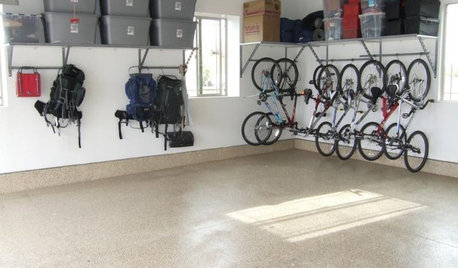John Deere Sabre will not start
sadsabreowner
13 years ago
Related Stories

CONTRACTOR TIPS10 Things to Discuss With Your Contractor Before Work Starts
Have a meeting a week before hammers and shovels fly to make sure everyone’s on the same page
Full Story
GARDENING GUIDESOh, Deer! 10 Native Flowers That Stand Up to the Herds
Keeping a garden amid hungry deer can be hard, but these plants should fare well
Full Story
FENCES AND GATESA Deer Fence Can Be Decorative as Well as Protective
You need a monster-size fence to shelter your garden from deer, but it doesn’t have to look like a monstrosity
Full Story
MOST POPULARGarage Cleaning Tips for the Overwhelmed
Don’t let this catch-all space get the better of you. These baby steps can get you started
Full Story
HOUZZ TOURSPortland Home Tour Celebrates a Native Son
Step inside 6 midcentury homes highlighting architect Van Evera Bailey’s work
Full Story
HOUZZ TVHouzz TV: A Most Unusual Indoor-Outdoor Connection
A giant California Sycamore grows through this dream house in the hills of Los Angeles
Full Story
GARDENING GUIDESGreat Design Plant: Velvety Dwarf Bottlebrush Beckons a Touch
Brilliant red blooms and inviting textures will capture your heart, but the low maintenance and small size will win over your practical side
Full Story
GARDENING GUIDES6 Unsung Bulbs for Fall Planting
Don't hang up your spade after summer — plant these unusual bulbs in fall for a spectacular spring show
Full Story
PRODUCT PICKSGuest Picks: Follow a Modern Farmhouse Path
These clean-lined furniture pieces and accessories in natural materials will put your home on the road to country chic
Full Story
GARDENING GUIDES6 Captivating Roses for an Alluringly Fragrant Garden
Perfume your garden with aromas from richly spicy to lightly sweet, without sacrificing an inch of color
Full StorySponsored






rcbe
rcmoser
Related Professionals
Canton Landscape Architects & Landscape Designers · Manhattan Beach Landscape Architects & Landscape Designers · Piqua Landscape Architects & Landscape Designers · Saint Louis Park Landscape Architects & Landscape Designers · Salisbury Landscape Architects & Landscape Designers · Suffern Landscape Architects & Landscape Designers · Framingham Landscape Contractors · Haverhill Landscape Contractors · Hoffman Estates Landscape Contractors · South Farmingdale Landscape Contractors · West Haverstraw Landscape Contractors · Crowley Landscape Contractors · Palos Heights Landscape Contractors · Lemont Window Contractors · Westchester Window Contractorsmownie
magnum300
sadsabreownerOriginal Author
mownie
mownie
sadsabreownerOriginal Author
sadsabreownerOriginal Author
mownie
Joe1980
sadsabreownerOriginal Author
Robert Kelly